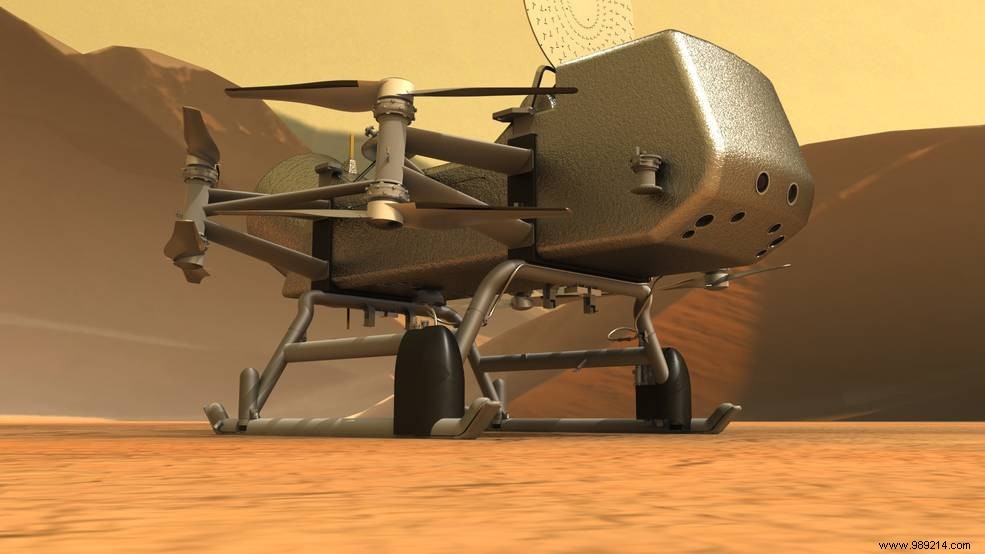NASA has just announced the postponement of the launch of its Dragonfly mission on Titan, Saturn's moon, to 2027. The reason:the budgetary challenges inherent in the pandemic of coronavirus.
Other than Earth, Titan is the only body in the Solar System that has stable surface liquids (compounds of methane and ethane). Saturn's moon is also coated in a thick atmosphere probably harboring complex chemistry involving organic molecules. As a result, many astrobiologists believe Titan could harbor life. If this is the case, it would however be very different from that of the Earth. That said, to get to the bottom of it, the best thing is to go and see directly on site.
With this in mind, in June 2019, the American agency confirmed the Dragonfly mission . The idea is to send a small drone capable of identifying whether or not life is capable of developing on Saturn's largest moon. Note that this mission is the fourth funded under the New Frontiers program from NASA which supports planetary science projects under $1 billion. As a reminder, the New Horizons missions , OSIRIS-REx or Juno are all part of this program.
Titan's atmosphere is four times denser than Earth's and gravity is seven times weaker, so every "jump" of this quadcopter could allow it to go around fifteen kilometres . Several instruments would then be responsible for analyzing the different organic elements of the moon. On the target side, NASA is considering exploring the Selk Crater, an old impact bed where traces of liquid water have been discovered.

Time-wise, the Dragonfly mission was normally scheduled to launch in 2026, with a landing on Titan scheduled for 2034. Unfortunately, the impact of the Covid pandemic on the Division's budget of NASA planetary sciences forced the agency to revise its plans. According to Spacenews , its launch is now planned for 2027 . On the other hand, it is not yet known whether the date of the landing will also have to be postponed.
NASA officials had warned that efforts to combat the effects of the pandemic would impact some science programs developed by the agency. On the other hand, there was nothing to suggest that the Dragonfly mission was concerned.
Finally, remember that after this mission, NASA plans to send a nuclear-powered submarine to the site. A working group is currently developing the outline of this project as part of the Innovative Advanced Concepts (NIAC) program, funded by the American agency. If it were to be validated, this mission could be launched in the late 2030s, for a planned arrival either in 2040 or 2045 .